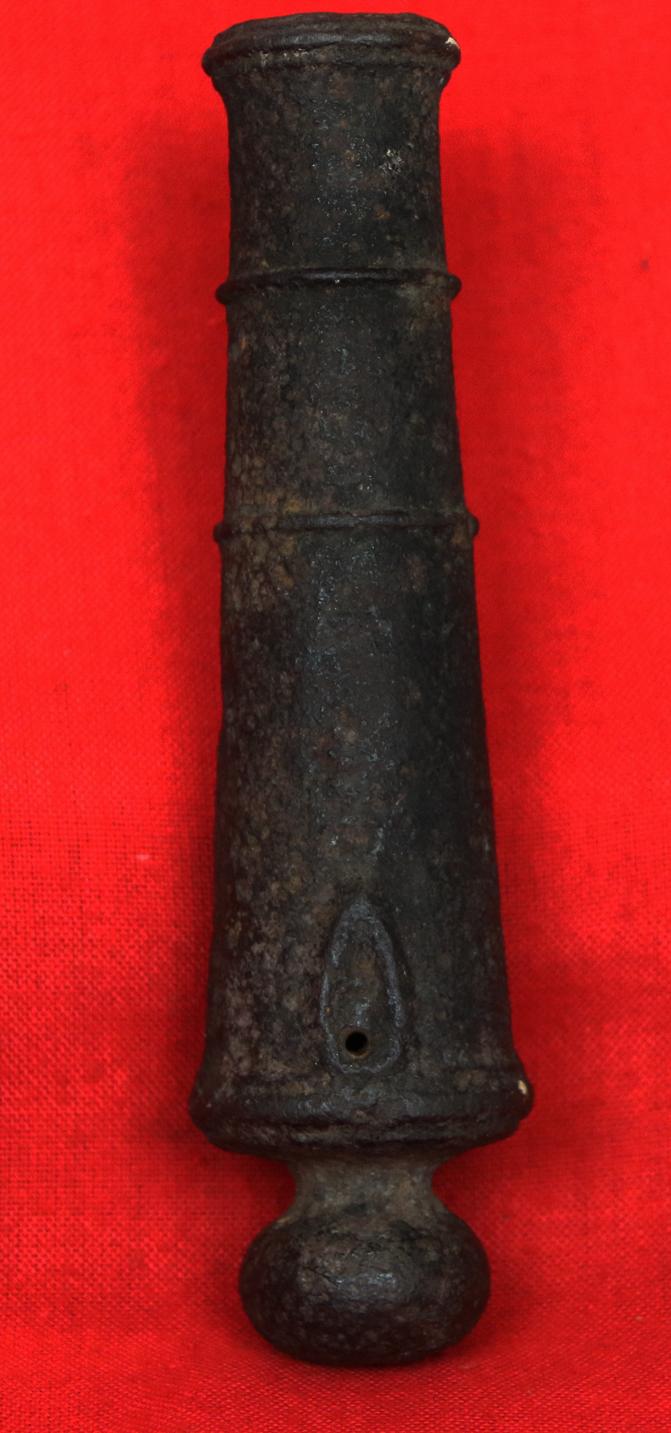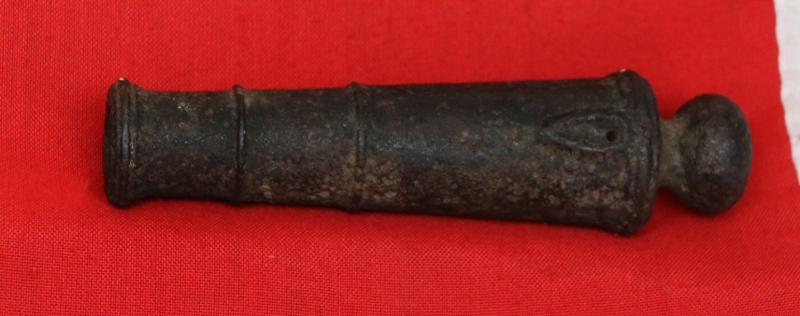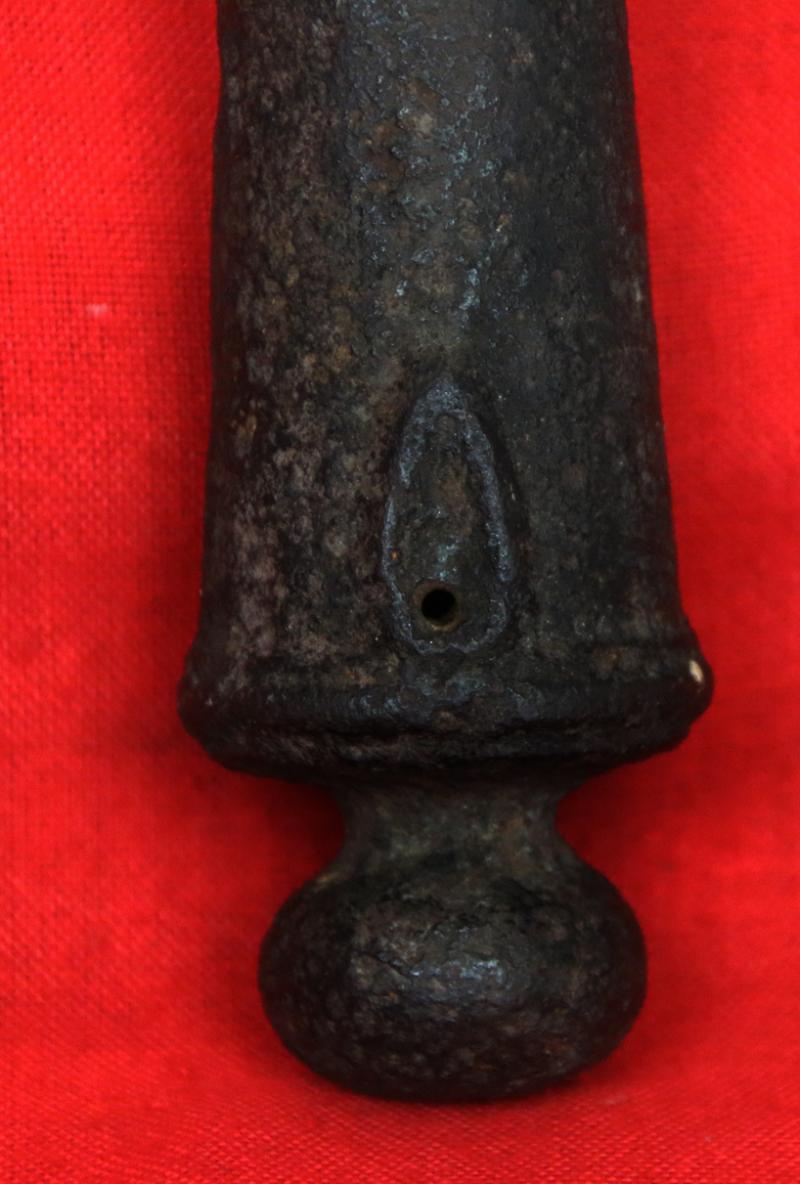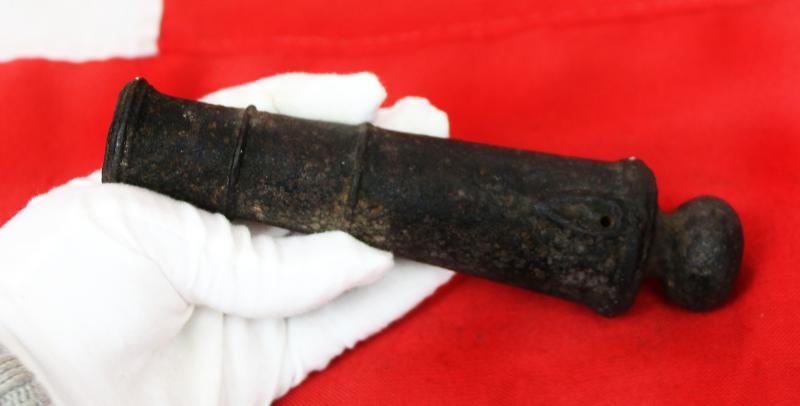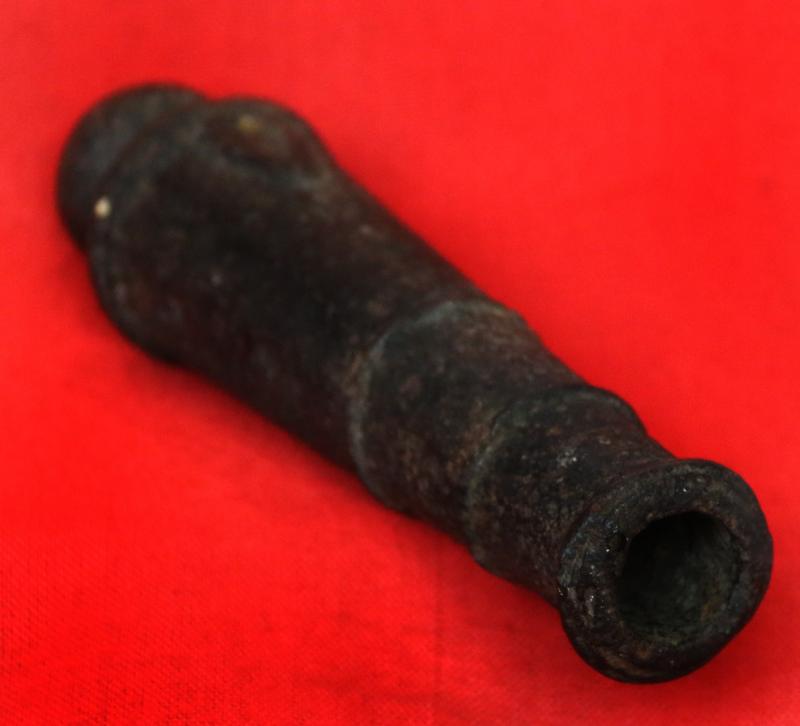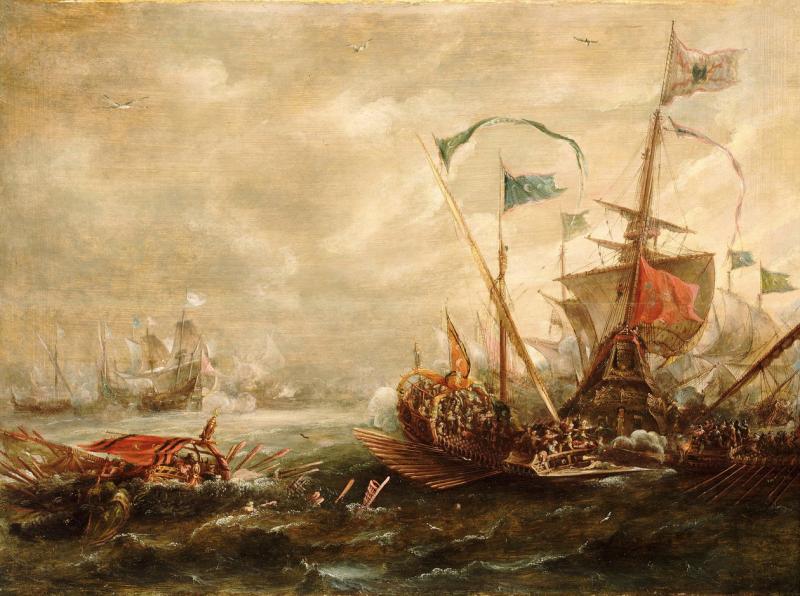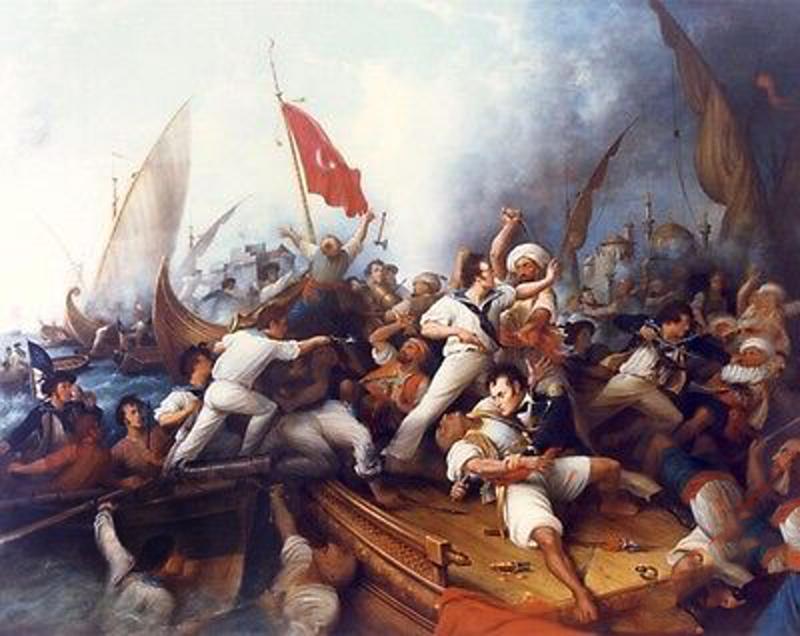Superb 18th Century American Revolutionary War, King George IIIrd Period Naval Hand Cannon From The Barbary Pirate Raids Period. From 1795, The Annual 'Tribute' Paid to the Regency of Algiers Was 20% of United States Federal Government Expenditure
Which translates today to the equivalent of one thousand two hundred billion dollars {$1.2 trillion} a year, in so called 'tribute' {ie, blackmail} payments to the Barbary States.
With traditional bell mouth, two barrel bands and large cascobel, without trunions, 18cm barrel.
Rare unmarked naval hand cannon of the type used off the Barbary Coast during the Age of Sail. Measures from raised muzzle to cascabel. Three stage body with round breech. Breech with lined border. Raised cannon muzzle. The iron is relatively smooth, with a good natural age patina throughout with areas of oxidation. A light shines through touchhole well. it could of double as a naval salute & powder tester.
From bases on the Barbary Coast, North Africa, the Barbary corsairs raided ships travelling through the Mediterranean and along the northern and western coasts of Africa, plundering their cargo and enslaving the people they captured. From at least 1500, the corsairs also conducted raids along seaside towns of Italy, France, Spain, Portugal, England and as far away as Iceland, capturing men, women and children. On some occasions, settlements such as Baltimore, Ireland were abandoned following the raid, only being resettled many years later. Between 1609 and 1616, England alone had 466 merchant ships lost to Barbary corsairs
Until the American Declaration of Independence in 1776, British treaties with the North African states protected American ships from the Barbary corsairs. During the American Revolutionary War, the Corsairs attacked American merchant vessels in the Mediterranean. However, on December 20, 1777, Sultan Mohammed III of Morocco issued a declaration recognizing America as an independent country, and stating that American merchant ships could enjoy safe passage into the Mediterranean and along the coast. The relations were formalized with the Moroccan–American Treaty of Friendship signed in 1786, which stands as the U.S.'s oldest non-broken friendship treaty with a foreign power.
The Barbary threat led directly to the United States founding the United States Navy in March 1794. While the United States did secure peace treaties with the Barbary states, it was obliged to pay tribute for protection from attack. The burden was substantial: from 1795, the annual tribute paid to the Regency of Algiers amounted to 20% of United States federal government's annual expenditures.
In 1798, an islet near Sardinia was attacked by the Tunisians, and more than 900 inhabitants were taken away as slaves.
Code: 25679

